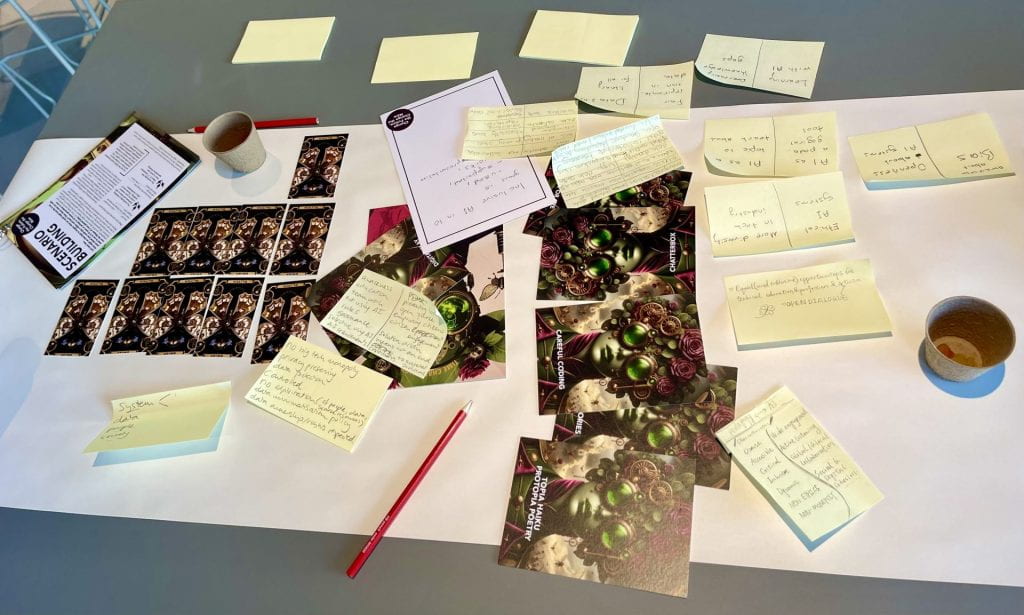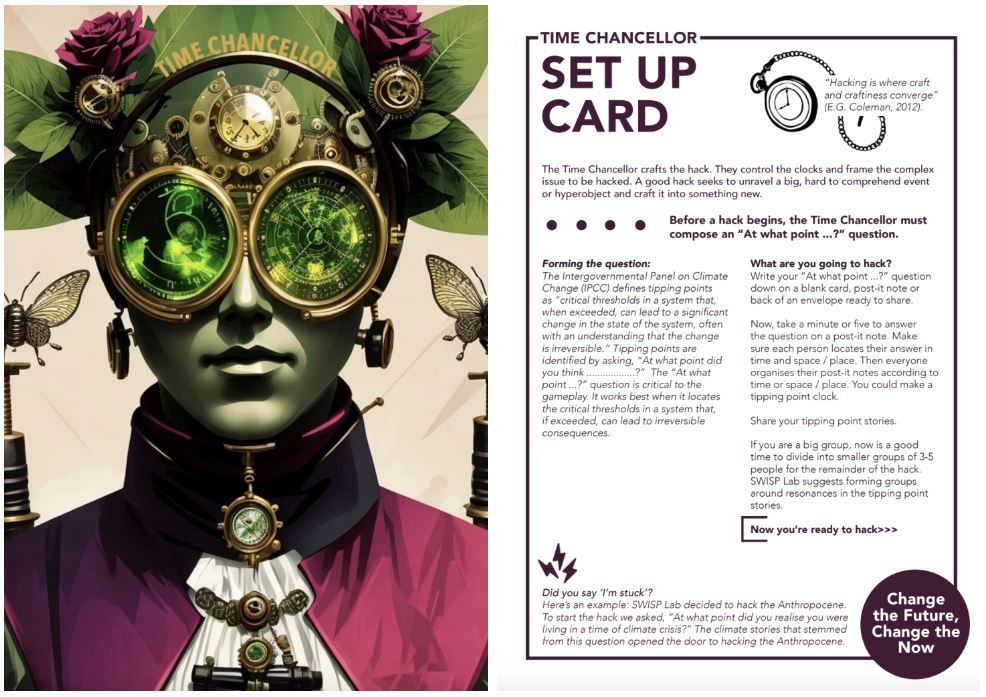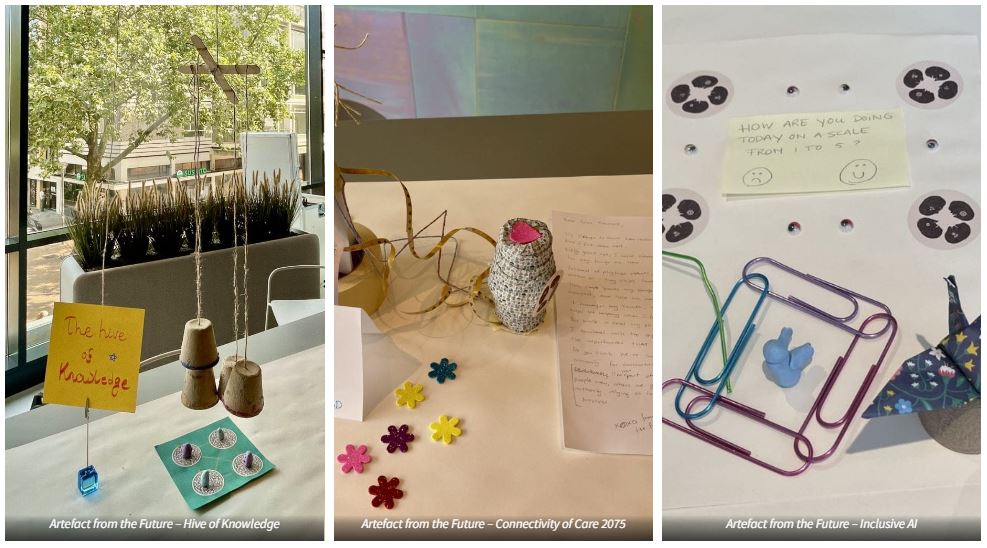Interdisciplinary hack of digital inclusion – change the future, change the now
SWISP Lab was hosted by Jantina Tammes School of Digital Society, Technology and AI ( Joelle Swart UG) for this hack, which took place at the aptly named ‘House of Connections’, Groningen, Netherlands on 5 & 6th September, 2024. The Jantina Tammes School is the University of Groningen’s interdisciplinary centre dedicated to digital society, technology and artificial intelligence (AI).
|
This blogpost about the Interdisciplinarity Workshop '
Let’s Hack Interdisciplinarity - Workshop with Dr Sarah Healy
' was published on the
Universty of Melbourne's website
on September 12, 2024.
|

How can we ensure that in an increasingly digitalised society, all citizens can still participate?
Even in highly connected countries like The Netherlands, an estimated number of 5 million people is lacking the ability to critically and mindfully use digital media (BZK, 2022), leaving them at risk of being socially excluded. This ‘Change the Future, Change the Now’ hackathon aimed to promote digital inclusion by bringing together knowledge from different fields and consider how an interdisciplinary approach might address this societal challenge across generations.
At the intersection of interdisciplinarity, digital inclusion and speculative futuring, 18x individuals from the Jantina Tammes School of Digital Society, Technology and AI gathered over two half-day workshops to wonder about what the interdisciplinary futures of digital inclusion might be and how those interdisciplinary futures might come about. Together we engaged the SWISP Lab ‘Change the Future – Change the Now’ speculative practice architectures to wonder about what the interdisciplinary futures of digital inclusion might be – both at a personal level and at a societal level. In the end we didn’t just hack interdisciplinarity, but also digital inclusion and time. Part of this meant troubling concepts of ‘progress’ and Eurocentric concepts of linear time as we collectively reimagined a ‘thick present’ of interdisciplinarity through future-casting and fabulation.

‘Change the Future – Change the Now’ is an extended reality experience designed to think about the future, challenge perceptions about what’s possible in research, and collectively locate the big decisions that will need to be made at important moments. The gameplay of this SWISP Lab hack stems from a ‘tipping point’ question and a follow-on question that elicits a wondering tethered to that tipping point:
At what point did you decide that an interdisciplinary approach was necessary to address a specific challenge in digital inclusion?
What might be the interdisciplinary futures of digital inclusion?
We sorted the responses from the earliest tipping point stories (2009) to the far future, noting that the point in time that certain futures were predicted to take place were dependant on how optimistic or pessimistic the person imagining the future of digital inclusion was feeling. The same future occurred more than once, fracturing the timeline.
Having located our tipping points and started speculating about the interdisciplinary futures of digital inclusion, we built three different scenarios which we would think with, in and through remainder of the hack. These were:
-
The first day of the academic year in 2050 (The Hive of Knowledge)
-
Robots in future age-care (Connectivity of Care 2075)
-
Inclusive and equitable AI (How are you today?)
The three teams then engaged in speculative practice, guided by the remaining four speculative practice architectures: Backcasting-Futurecasting, Artefacts from the Future, Tanglegramming, Fictional Narratives. Teams had rich and complex conversations as they worked together to imagine detailed futures and identify what it might take for a digital society that has principles of AI and technological justice at its core – as well as what those principles might be for the three scenarios.

SWISP Lab’s thought provoking chatterbox mediated some of our speculating, offering 8x different questions to think with and through. Questions are an important part of speculative inquiry, the questions we ask ourselves and the questions asked by others. Questions can even be a research output. The chatterbox questions, as follows, were formulated in conversation with Joelle Swart (RUG), the Jantina Tammes School of Digital Society, Technology and AI website, and ChatGPT:
-
What if we used human-centered AI to create interactive, living archives that amplify diverse voices, documenting the intersection of youth experiences and climate change across different geographies? How might this foster global digital inclusion and shared understanding?
-
What if digital inclusion initiatives were framed as reparative acts that address historical injustices related to land, culture, and technology? How might interdisciplinary collaborations between technologists, historians, and community leaders reshape our collective futures?
-
What if AI and digital platforms were designed to map the emotional and invisible dimensions of the Anthropocene, such as grief, hope, and resilience? How might this empathetic approach enhance digital literacy and inclusion?
-
What if augmented reality technologies were used to visualise the impacts of the Anthropocene on local communities, making environmental changes more visible and relatable? How might interdisciplinary AR tools expand digital awareness and societal action?
-
What if digital literacy programs included learning about non-human entities and ecosystems as part of understanding data flows in the Anthropocene? How might integrating ecological and cultural knowledge enhance our approach to digital inclusion?
-
What if youth-led digital projects were integrated into mainstream digital platforms to amplify their perspectives on local and/or global issues? How might this inclusion reshape digital spaces and influence political discourse?
-
What if we reimagined digital inclusion by challenging and decolonising the “scripts of time” that define technological progress? How might interdisciplinary work foster new narratives that include diverse histories, peoples and futures?
-
What if speculative design and digital tools were adopted to simulate alternative futures, exploring ethical and social implications of emerging technologies in the Anthropocene? How might these simulations help us better prepare for and shape inclusive digital societies?
We ended the hackathon with a series of ‘Topia Hiaku’, playing the newest SWISP Lab creative method card which asks players to consider everything they experienced during the hack and render their scenarios as three different topias through haiku poetry – a dystopia, a utopia and a protopia. It was interesting to note that rendering a protopian future was found to be the hardest of tasks. We invite you to enjoy the haiku below and imagine the futures of digital inclusion for yourself.
|
Read the full article by Dr Sarah Healy with more pictures on the
Universty of Melbourne's website
.
|
More news
-
15 September 2025
Successful visit to the UG by Rector of Institut Teknologi Bandung

